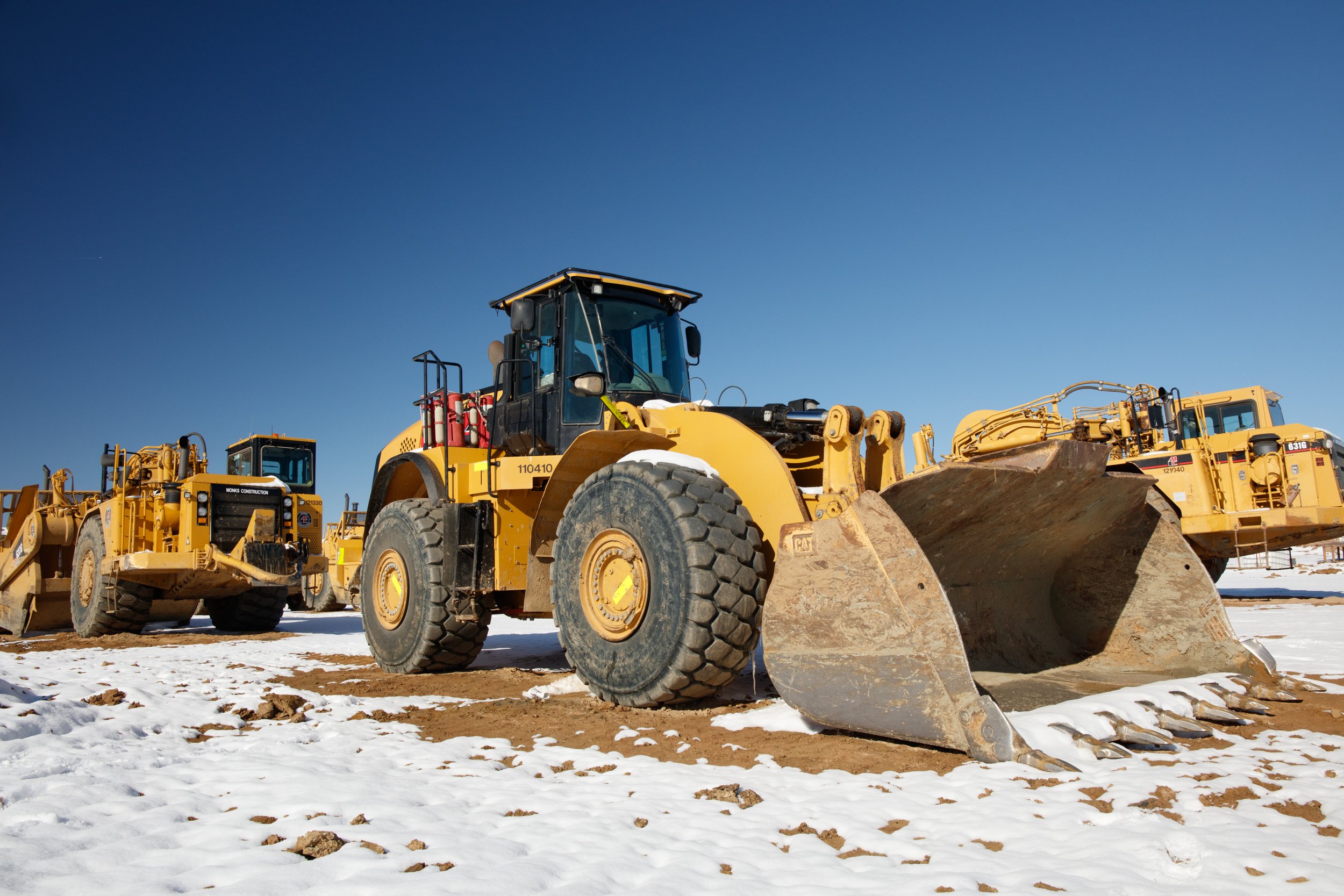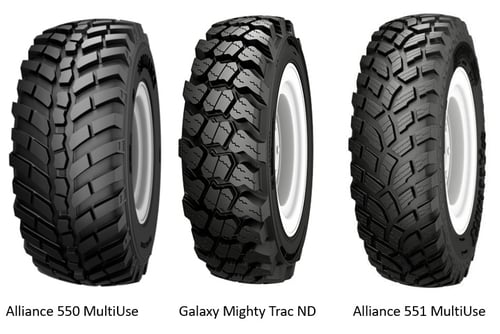How to Give Winter Construction Tire Performance a Boost
For many construction companies, the arrival of winter poses a number of challenges, including operating on snowy, icy, frozen, and wet ground. Since tires are the contact point between construction equipment and the ground, taking a few simple steps can ensure efficiency, increase service life, reduce the risk of downtime, and in the end put more money in your pocket this winter.

Inspect Tires
Frequent visual inspections of equipment tires are a good habit to practice year-round and are particularly important to do in winter weather and cold conditions. Icy and wet weather puts a priority on traction, so make sure tires have enough tread life left to perform at their best. Keep an eye out for common culprits like cracking and chunking, which can cause tire failure and downtime. You’ll also want to make sure there is no puncture-threatening debris stuck in the tread. Ice and snow build-up can also lead to poor performance and uneven wear, hide potential hazards and increase the risk of damage like sidewall abrasion and impact breaks.
There’s no golden rule for how often you should visually inspect tires, but the more regularly you do it, the more money, time, and headaches you’ll save yourself. Aspire to perform daily inspections.
Monitor and Maintain Tire Pressure
Cold weather can wreak havoc on the pressure of pneumatic tires—when the temperature lowers, so does the pressure inside radial and bias tires. Operating tires underinflated can present a host of problems, including decreased tire life, tire failure, reduced traction, and poor fuel efficiency. Underinflated tires can lower gas mileage in passenger cars by approximately 0.2% for every one psi drop in the average pressure of all tires—it might not sound like much, but fuel costs can eat into construction margins quickly.
Performing and adjusting inflation pressure regularly is a smart practice to establish. Like visual inspections, the more frequently you do it, the better results you’ll see.
Educate Operators
Operators have an enormous influence on the lifespan of equipment tires and need to adapt their behavior to winter conditions and applications. Slippery and slick conditions can make traveling at high speeds and taking sharp turns particularly dangerous as well as invite downtime—as strange as it sounds, it’s sometimes faster to go slow. Similarly, excessive downforce while plowing, exceeding load limitations, and not knowing about possible hazards can all lead to tire failure, reduce service life, and create an unsafe work environment.
Making sure operators are aware of surface conditions, understand their equipment’s capabilities, and are familiar with the site they’re operating at can go a long way toward reducing downtime, extending tire life, and increasing productivity.
Warm Up
Allowing equipment to warm up is another good year-round practice that’s particularly valuable in cold weather. Frigid temperatures can cause engine oils and hydraulic fluids to thicken—a warm-up period provides them a chance to run through the system and perform as intended. Tires also require time to warm up in cold conditions; even mildly cold weather can make the rubber stiff. In fact, many tires not optimized for winter use begin to lose elasticity at around 45°F. Simply put, provide tires with time to warm to optimize their performance—run them slowly and allow the compound to regain flexibility before pushing too hard.
Application-Specific Construction
There are a number of features that help construction tires operate in winter conditions. Block treads—like those on our Alliance 550—are proven performers on snow and ice, thanks to their numerous biting edges, especially when compared to a traditional bar-lug industrial tire. Sipes, like those found on our Galaxy Mighty Trac ND, are another valuable component of a tire that excels in winter applications—they add biting edges and improve traction in snow and slush. Special cold-weather compounds—like what’s used to make our Alliance 551—are also a beneficial feature for tires working in extreme winter temperatures.

Tire construction is also a significant contributor to winter performance. Radial tires are able to operate at lower inflation pressures than bias-ply tires, enabling them to put more tread on the ground and create more traction. Radial tires also dissipate heat (the number one enemy of tires) better than their bias counterparts. While it may be cold outside, heat builds up in tires—especially those traveling at high speeds or long distances—even in the most arctic temperatures.
Yokohama Off-Highway Tires America
From establishing a few best practices to outfitting equipment with application-specific tires, there are some easy steps construction businesses can take to improve their productivity, efficiency, and balance sheets this winter. Contact your local Yokohama Off-Highway Tire dealer or rep today to learn how to optimize your equipment’s tires for cold-weather work and how the right set of tires can benefit your business.

